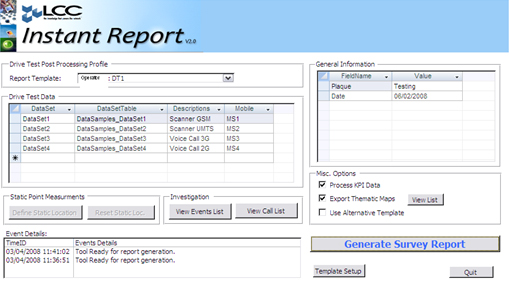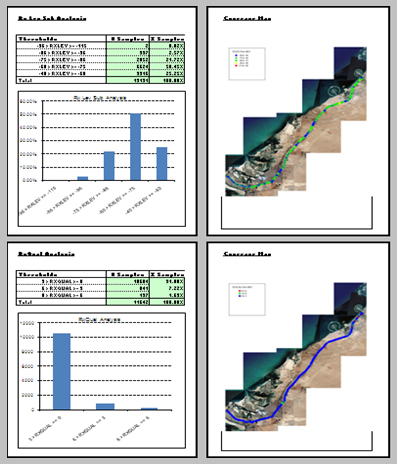New mobile networks are being rolled-out regularly by operators in order to keep up
with the pace of technology evolution and the ever increasing need for more bandwidth from mobile consumers. Once a network is put into service it actually does not work to its full speed and desired quality of service: it needs to be optimized. This optimization process is not only needed after the initial roll-out but is also a recurring and iterative process leading gradually to an improved network performance. The optimization process starts with an assessment of the performance of the network.

This activity is typically delivered through “Drive tests” which consist in the collection of Network KPIs by a mobile team equipped with measurement tools. The post processing task follows closely and aims delivering a summary report of the measurements. It outlines thematic maps and various statistics in order to provide the optimization engineer with a fair image of network quality presented in an easy manner enabling him at a glance to identify potential areas of network performance improvement.
Reporting is a process to show the summary of the performance parameters in a drive test result. The parameters usually called by KPI (Key Performance Indicators). In general, KPI is divided in two types, events KPIs and radio KPIs. Examples of events KPIs are Drop Call Rate, Call Setup Success Rate, Handover Success Rate, etc. And examples of radio KPIs are RxLev, RxQual, BER, etc.
LCC has developed internal tools to automate the delivery of post processing and survey reports. These reports are customized for each project and include typically a summary sheet, the main performance statistics (KPIs) that pertain to the technical network performance as well as to end to end service quality. The KPIs are geo-coded and presented on thematic maps enabling an understanding of Network behavior, at a glimpse.

